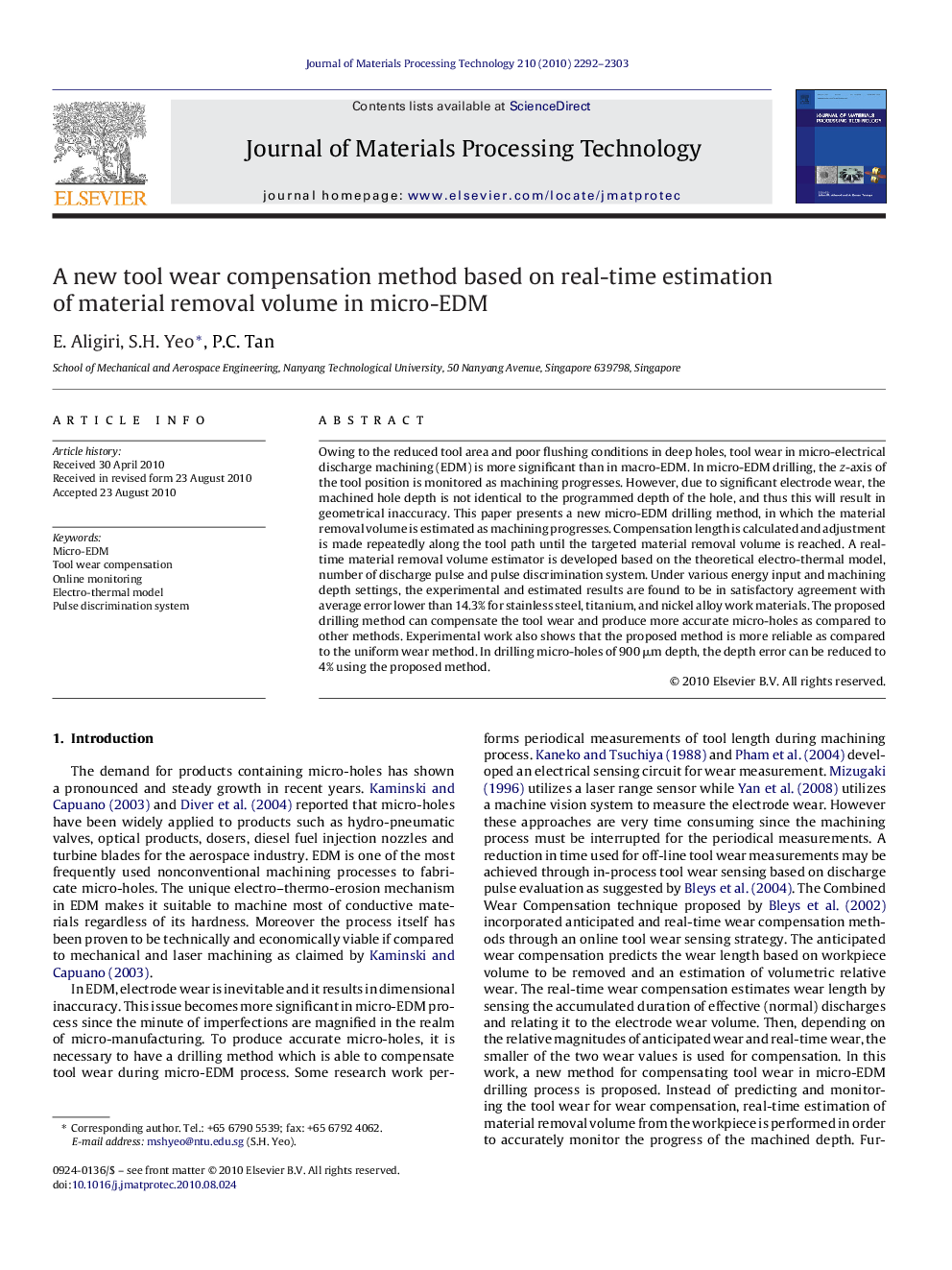| کد مقاله | کد نشریه | سال انتشار | مقاله انگلیسی | نسخه تمام متن |
|---|---|---|---|---|
| 796039 | 1466753 | 2010 | 12 صفحه PDF | دانلود رایگان |

Owing to the reduced tool area and poor flushing conditions in deep holes, tool wear in micro-electrical discharge machining (EDM) is more significant than in macro-EDM. In micro-EDM drilling, the z-axis of the tool position is monitored as machining progresses. However, due to significant electrode wear, the machined hole depth is not identical to the programmed depth of the hole, and thus this will result in geometrical inaccuracy. This paper presents a new micro-EDM drilling method, in which the material removal volume is estimated as machining progresses. Compensation length is calculated and adjustment is made repeatedly along the tool path until the targeted material removal volume is reached. A real-time material removal volume estimator is developed based on the theoretical electro-thermal model, number of discharge pulse and pulse discrimination system. Under various energy input and machining depth settings, the experimental and estimated results are found to be in satisfactory agreement with average error lower than 14.3% for stainless steel, titanium, and nickel alloy work materials. The proposed drilling method can compensate the tool wear and produce more accurate micro-holes as compared to other methods. Experimental work also shows that the proposed method is more reliable as compared to the uniform wear method. In drilling micro-holes of 900 μm depth, the depth error can be reduced to 4% using the proposed method.
Journal: Journal of Materials Processing Technology - Volume 210, Issue 15, 19 November 2010, Pages 2292–2303